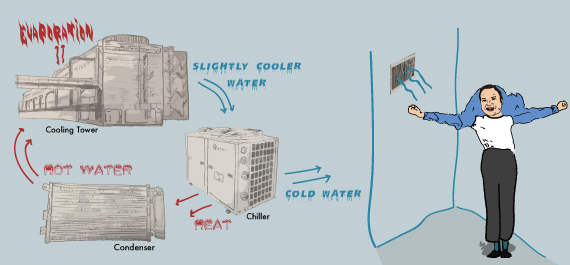Trending
Hallets Point chills out: After 421a, Durst downsized project, retooled air conditioning system
Developer prefers not to use grated-and-hated PTACs

When 421a expired nearly a year ago, developers bemoaned the chilling effect its absence would have on rental development in New York City. For the Durst Organization’s Hallet’s Point residential project, this warning has manifested in two major ways. For one, the uncertainty of the tax break’s future halted progress on four of five planned buildings. Surprisingly, it also overhauled how tenants will cool off in the summer.
The developer initially planned to take the $1.5 billion project off-grid, meaning that Durst would build its own power plants for the buildings. But when it became clear the tax break’s expiration wasn’t going to be resolved anytime soon, the developer changed course.
“We had to abandon the island concept,” Douglas Durst [TRDataCustom] told The Real Deal. “That was based on all five buildings going forward.”
The project — now currently just the 22-story mixed-use building with 405 units at 26-01 First Street — will instead operate off an existing Consolidated Electric Power grid and will use an alternative air conditioning system, known as a chilled-water system. The system — which pumps cold water through a network of pipes in order to blow cool air into a room — is a common feature in office buildings throughout the city. But it’s relatively foreign to residential rental buildings. The city’s residential buildings usually employ the dreaded packaged terminal air conditioners (PTACs). Though residential developers have started to turn to alternatives over the last few years, most turn to ol’ reliable PTACs because they’re less expensive and require fewer regulatory gymnastics.
You down with PTACs?
PTACs have been the standard mode of climate control in New York City buildings since at least the 1960s. They basically operate the way that your run-of-the-mill window unit works: Cold air flows into the room, hot air blows out. These units, in their simplest form, have been in use since the 1930s. An issue of Popular Mechanics from 1935 summed up the innovation as: “Almost at the touch of a button, it is possible to have the air cooled.” How futuristic!
The chilled water system is a bit more involved (stay with us): The water is cooled in a chilled water plant — in the case of the Hallets Point project, on the building’s third floor. This chilled water — 42 degrees fahrenheit — is then circulated throughout the building through insulated pipes, where it passes through a coil and then is blown out into individual apartments as cold air. The water is blown through a fan on a two-foot vertical unit that is built into the wall. This water then circulates back to the chilled water plant.
Meanwhile, back at the water plant, the heat that was removed from the water passes through a condenser, where hot water is sent to the cooling tower on the roof. There the water’s temperature is brought down through evaporation to about 80 degrees, and then sent back to the chilled water plant to begin the cycle again.
Seeking alternatives
Phil Skalaski, vice president of engineering and energy services at Durst, said the system will increase the upfront cost of the building’s mechanical systems by 8 percent but should more than make up for it in energy costs. The developer is currently seeking approval from the New York State Homes and Community Renewal and the city’s Department of Housing and Preservation to determine how the 81 affordable units in the building will be charged for the air conditioning. Skalaski said all the units will have a meter that measures the amount of water used to calibrate how much tenants should be billed.
Other developers, like TF Cornerstone, have also turned to PTAC alternatives. Bruce Weill, who works for the developer’s construction division, said that the company used a similar water-based cooling system in Its 33 Bond Street project in Downtown Brooklyn and 606 West 57th Street on the Far West Side, though their system doesn’t require a cooling tower and doubles as a heating system in the winter months. New York YIMBY reported on TF Cornerstone’s buildings in 2014, noting that outside New York, PTACs are not the norm. The system is often derided for the grates or “louver” that interrupt a building’s facade.
“Sometimes the architect is able to blend in a nice louver band, and sometimes they don’t,” Weill said. “It’s an aesthetic, but from an energy code standpoint, the water-cooling method is more efficient.”
Durst believes the method used in the Hallets Point project — if it gains all the necessary approvals — will gain more traction in the city.
“It’s one of those things that it sort of makes perfect sense to do,” he said. “I think once it’s in place, everyone will be doing it.”




